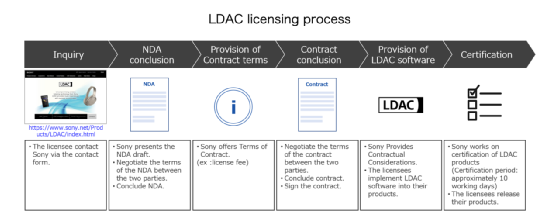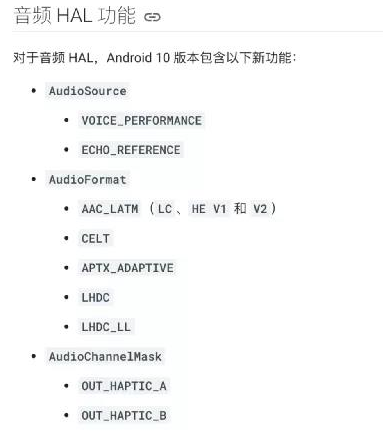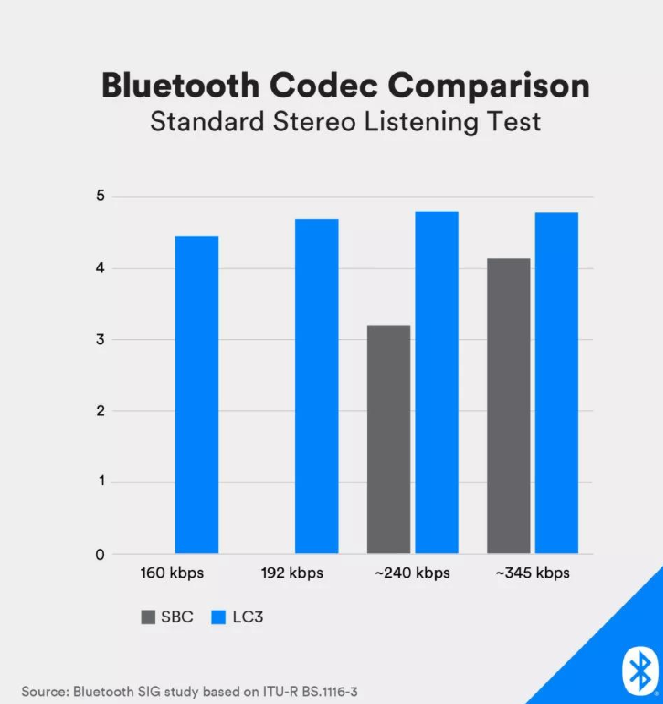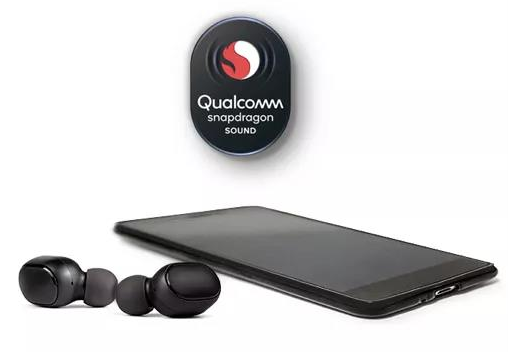TWS enters the high-quality track, the mainstream competition of Bluetooth Codec is intensified
TWS has seized the market from design and user pain points in recent years, but with the improvement of technology, high-resolution sound quality, extended battery life and low latency have become a new round of user concerns.
TWS enters the high-quality track, the mainstream competition of solar connector is intensified
TWS has seized the market from design and user pain points in recent years, but with the improvement of technology, high-resolution sound quality, extended battery life and low latency have become a new round of user concerns. According to Qualcomm’s State of Play 2020 report, in a survey of smartphone users in the United States, the United Kingdom, China, Japan, and Germany, sound quality is still one of the largest purchasing drivers. About 77% of respondents are concerned about high-quality sound. There is a demand for wireless audio.
With the current Bluetooth technology, it is naturally unrealistic to achieve the sound quality of wired headsets, but one of the ideas to improve the wireless audio resolution is the Bluetooth Codec. By raising the level of the Bluetooth audio codec, it is possible to catch Live the next hot spot in TWS. Therefore, many companies and alliances have begun to promote the next generation of Bluetooth Codec, but their practices are quite different.
Sony-LDAC
LDAC is Sony’s self-developed audio codec technology, which can achieve wireless audio up to 990 kbps at 32 bit/96 kHz via Bluetooth connection. On September 17, 2019, Japan Audio Society (Japan Audio Society), which focuses on audio equipment certification, awarded LDAC the gold standard certification of Hi-Res Audio Wireless.
The encoder part of this technology uses Apache 2.0 open source. As one of the contributors to the Android open source project, Sony has contributed a number of new features, one of which is LDAC. Since 2017, LDAC has also officially become part of Android 8.0, so every OEM can build this coding standard into their Android devices.

LDAC authorization process / Sony
However, the decoder part of LDAC is still Sony's patented technology, so if the receiving device wants to use LDAC, it must pass the Sony test, such as Sony's own headphones and speakers, as well as Wanmo's neck-mounted headphones and Xiaomi noise reduction collars. Bluetooth headsets and other devices authorized by Sony.
From Sony's point of view, open source coding and charging of decoding license fees can expand the penetration rate of LDAC without losing the competitiveness of its own audio equipment. From the above-mentioned headphones and neck-mounted headphones, perhaps due to size considerations, LDAC has not appeared on TWS headphones for a long time, and even Sony’s own TWS headphones have not been able to join LDAC, but this situation is very likely. Changes are about to usher in.

WF-1000XM4 leaked packaging image identification part / Reddit
The Japan Audio Association added TWS headsets to the Hi-Res Audio Wireless certification on November 30 last year, but these headsets must use the Association’s certified Codec in order to be certified. According to the Hi-Res Audio Wireless gold label on the packaging pictures recently leaked by foreign communities, Sony is likely to add LDAC to the next-generation noise reduction bean WF-1000XM4 TWS headset.
Sony uses MediaTek (Airtel) chips in its own headset products, such as the MT2811 used in WF-1000XM3. It is still unknown whether Sony will use this chip in new products, but LDAC will inevitably affect the battery life of TWS headsets. Make an impact. LDAC supports three bit rates of 330, 660 and 990 kbps, but considering that other general-purpose Codecs are generally higher than 330 kbps, Sony should not castrate it to 330 kbps.
Shengwei Advanced Technology-LHDC
In addition to Sony's LDAC, Shengwei Advanced Technology's LHDC has also obtained the Hi-Res Audio Wireless gold standard certification of the Japan Audio Association, and is one of the only two Bluetooth audio codecs that have obtained the certification so far. Compared with the usual SBC, LHDC can also increase the bit rate to 900kbps at the highest sampling rate of 96kHz. The first mobile phone to support this Codec is Huawei's Mate 10.
In order to promote this new Codec, Huawei-led HWA (High Resolution Wireless Audio Alliance) came into being. The alliance now has Sennheiser, HiFiMAN, AKM, Audio-Technica, Wanmo and many other audio equipment manufacturers. Currently, the mobile phones that support LHDC are mainly Xiaomi, Huawei and OPPO. After updating to the latest system, LHDC can be used. These three also launched TWS audio devices that support the Codec, such as Huawei’s Freebuds 2 Pro and Xiaomi’s Air2. Pro and OPPO's Enco X.
As a new Bluetooth Codec solution, LHDC is also being continuously optimized. At present, most LHDCs on the market are V3 versions. Shengwei Advanced Technology mentioned that it has undergone stability adjustments from V1 to V2. From V2 to V3, it mainly adjusted the forwarding mechanism. For low-latency scenarios, Shengwei Advanced Technology has also introduced the LHDC-LL solution. The purpose of the Codec is to reduce audio delay as much as possible while ensuring a certain bit rate. According to the data given by it, under 24bit/48Khz, the LHDC-LL bit rate is up to 600kbps, and the delay is as low as 30ms. Shengwei Advanced Technology has also prepared the LARC (Low Latency Adaptive Reconstruction) technology for LHDC-LL to further improve the stability of audio transmission.

Audio HAL function of Android 10 / AOSP
Shengwei Advanced Technology also submitted the LHDC library file to the Android open source project AOSP. Currently, the audio HAL of the Android 10 version already supports LHDC and LHDC-LL. Shengwei Advanced Technology has cooperated with chip manufacturers such as MediaTek and Qualcomm, and more mobile phones supporting LHDC will be launched in the future.
Bluetooth Technology Alliance-LC3

Comparison of SBC and LC3 under standard stereo test / Bluetooth Technology Alliance
In order to replace the old SBC Codec, the Bluetooth Technology Alliance has added a new Codec—LC3 to Bluetooth 5.2. LC3 was jointly developed by Fraunhofer IIS and Ericsson. It is said that the new LC3 has better audio quality and efficiency than SBC, which greatly improves the battery life of supported devices. The sampling rate of LC3 is up to 48kHz, and the bit rate is up to 426.7kbps
Comparison of LC3 and SBC compression capabilities / Bluetooth Technology Alliance
Both LDAC and LHDC mentioned earlier are pursuing higher bit rates, but bit rate is not the only factor that determines sound quality. Among the data provided by the Bluetooth Technology Alliance, LC3 can further compress the data and transmit the same wireless audio data as the 345kbps SBC at a bit rate of 192kbps.
As a part of Bluetooth 5.2 and LE Audio, the Bluetooth Technology Alliance originally planned to release a complete Bluetooth 5.2 core specification in 2020, but the specification that defines all LE Audio use cases has been postponed to mid-2021, so we may only be able to do so in the second half of the year. Seeing the emergence of LC3 Codec, manufacturers have already been able to test this new Codec in advance.
In fact, LC3 also has a superset LC3plus. In addition to all the features of LC3 (high-quality voice and audio), LC3plus also includes anti-interference, low-latency and high-resolution audio. When the frame length is 2.5ms, the delay of LC3plus is as low as 5ms. The high sampling rate audio mode of LC3plus also supports 24bit/96 kHz audio data, which is also impossible for the current LC3. ETSI has adopted LC3plus as the TS 103634 public standard, and it is also the industry's first public standard to provide high-resolution streaming music for wireless devices, free from patent technology.
Qualcomm-aptX
In view of the current market dominance on chips, Qualcomm's aptX is also one of the most popular Bluetooth audio Codecs. At present, aptX is divided into three branches: aptX Adaptive, aptX HD (high sound quality) and aptX Low Latency (low latency), but these three codecs always lack 96kHz/24-bit high-resolution audio support.
To this end, Qualcomm recently launched Snapdragon Sound technology, which combines Qualcomm’s Snapdragon mobile chip, FastConnect 6900 mobile connection system, QCC515x and other three series of Bluetooth audio SoC and Qualcomm aptX Adaptive Codec, and also provides users with 24-bit /96kHz and 89ms delay Bluetooth audio transmission.

Snapdragon Sound logo / Qualcomm
Xiaomi and Audio-Technica will also become the first mobile phone and device manufacturers to support Snapdragon Sound, and terminal products supporting this technology are expected to be available later this year. Qualcomm also introduced a new logo to identify mobile phones, earplugs and headset products that support this technology. Qualcomm claims that PCs, watches and XR glasses using Qualcomm chips will also support this technology in the future.
Summary
In addition to the codecs mentioned above, Samsung has also introduced its own patented technology Scalable Codec, but this technology that is only used for Samsung products is obviously difficult to make a splash in this huge market. Judging from the above Codec, there are both patented technologies and open standards. So which one can become the mainstream of TWS? In fact, this is not only a problem that consumers struggle with when purchasing equipment, but also annoying many audio equipment vendors.
For example, FiiO canceled LHDC support on the portable player M15. FiiO Electronics co-founder James mentioned on Weibo that although M15 uses Qualcomm's CSR8675 chip, SBC, AAC, aptX, LDAC and LHDC could have been one. Not fall. However, as the initiator of HWA, Huawei began to gradually abandon this Codec in its new products, FiiO cancelled its continued support due to some technical trade-offs.
In addition to these players, smart speakers, earphones and Android phones, Apple devices that occupy a huge market still use two backward Bluetooth codecs, SBC and AAC. This is also the reason why many device vendors have not followed up with the new generation of Codec. . But one of the contributors to the LC3 specification is Apple’s audio algorithm expert. Perhaps Apple’s devices will also add support for LC3 when they support Bluetooth 5.2.
In any case, from the perspective of major Codec improvements and iterations, better audio quality has become an inevitable trend. Whether TWS can solve the problems of delay and power consumption in pursuit of sound quality, perhaps these important tasks have to be made by the Bluetooth audio Codec. Share some.